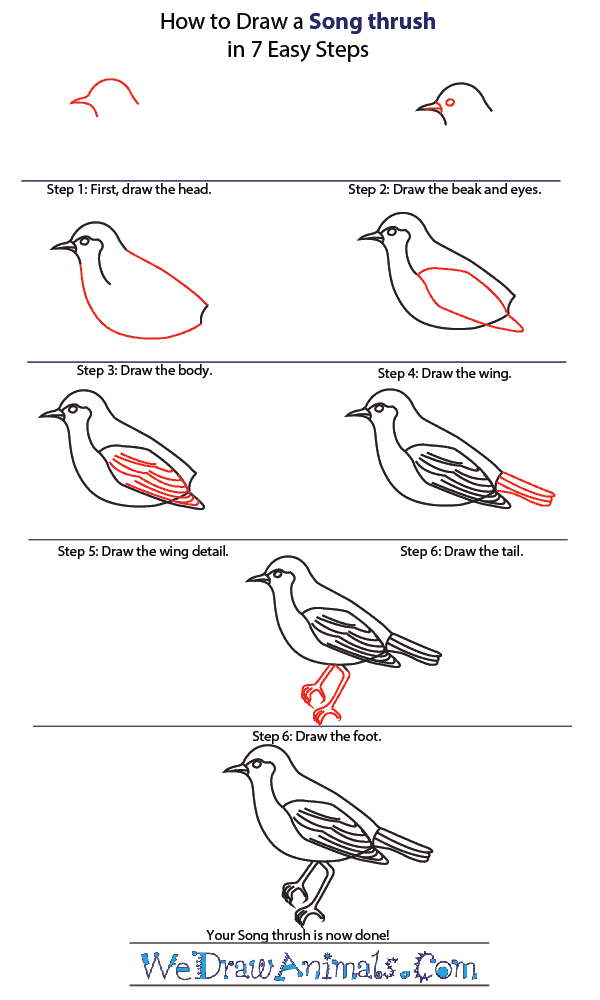In this quick tutorial you'll learn how to draw a Song Thrush in 7 easy steps - great for kids and novice artists.
The images above represent how your finished drawing is going to look and the steps involved.
Below are the individual steps - you can click on each one for a High Resolution printable PDF version.
At the bottom you can read some interesting facts about the Song Thrush.
Make sure you also check out any of the hundreds of drawing tutorials grouped by category.
How to Draw a Song Thrush - Step-by-Step Tutorial
Step 1: Let's start with the song thrush's head. Draw a rounded top with a pointed beak.
Step 2: Draw the face by adding detail to the beak and a circle for the eye.
Step 3: Now draw the body. Draw a straight, diagonal line for the top, and a rounded line for the bottom. Draw a curvy line from the beak to the middle of the body for detail.
Step 4: Draw a diamond shape for the wing that sticks out past the body.
Step 5: Let's add detail to the wing. Simply draw vertical lines.
Step 6: Now, draw the tail. Make a rectangular shape and add lines for the detail.
Step 7: Finally, draw the legs and feet. Birds have thin legs and digits for lots of reasons.
Interesting Facts about the SONG THRUSH
The Song Thrush is a member of the bird family and the scientific term for them is Turdus philomelos. Other common names for this animal are Throstle (German) or Mavis (French). The name “philo-melos” means “loving-music” and is derived from the Greek mythological character Philomela, who lost her tongue but became a singing bird.
Did you know?
- It was first mentioned in 1831 by a German scientist.
- The species dates back to the 14th century.
- They reach from 8 inches to over 9 inches long.
- The male has over 100 phrases to sing with.
- It has a nesting range of over 7,000 feet in altitude.
- The species was used as food over 12,000 years ago.
- It was kept as a pet for up to at least the 19th century.
This type of animal has one of the loudest voices of any other bird its size. They live in much of Europe and Asia making songs that have been mentioned in poetry, namely in the work of Chaucer the world famous poet. The animal is found mostly in gardens, but rarely in forests and farms, using a favorite rock to break the shell of snails.








